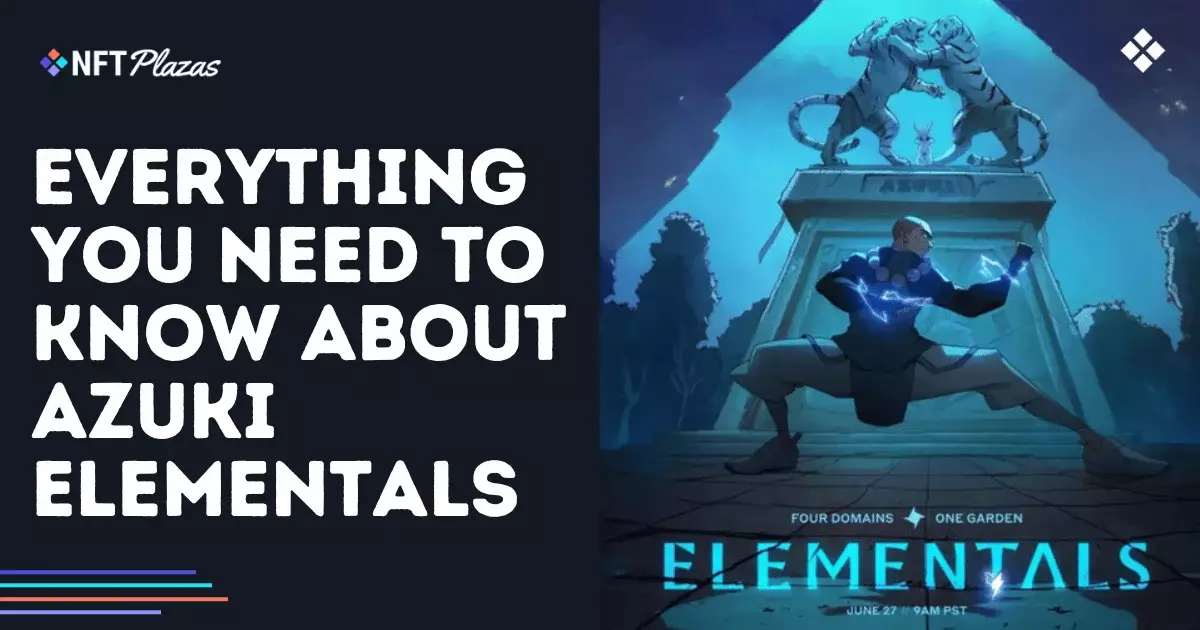In the ever-fluctuating world of non-fungible tokens, few projects have managed to stir as much excitement and controversy as Azuki. Its recent expansion, the Azuki Elementals collection, epitomizes the unpredictable nature of the NFT market—an ecosystem where innovation often disguises underlying vulnerabilities. This collection, launched with grand fanfare and a swift sellout, exemplifies the digital age’s tendency to chase fleeting hype rather than sustainable value. From the outset, Azuki Elementals promised an innovative blend of art, lore, and community engagement, but beneath this veneer lies a landscape riddled with pitfalls that savvy observers cannot ignore.
The core fallacy rests in equating initial success—selling out in mere minutes—with genuine, long-term value. Such explosive demand often inflates the perceived worth of these digital assets, creating an illusion of permanence that is, in reality, fragile. While Azuki’s marketing brilliantly capitalized on the anime-inspired aesthetic, this aesthetic alone does not guarantee lasting relevance. As history suggests, rapid sellouts tend to be short-lived phenomena, especially when market fundamentals—utility, rarity, and community loyalty—are not robust enough to sustain interest once initial euphoria fades.
The Mirage of Market Performance
Despite the high expectations, the secondary market performance of Azuki Elementals has been disappointing. The collection’s floor price plummeted from the minting price of around 2 ETH to approximately 0.24 ETH by early 2025. This decline underscores a critical flaw: the disconnect between hype and intrinsic value. In fact, such a steep fall highlights the speculative nature of the NFT space, where many buyers are driven not by genuine engagement but by the desire to flip assets for quick profit.
This stark valuation trajectory exposes the naive optimism of many early investors who believed that a sellout, coupled with a prominent brand like Azuki, would inevitably translate into sustained appreciation. Instead, the market has proven that hype alone is insufficient. Rarity rankings, community support, and utility are more meaningful indicators of an asset’s future worth—yet, in the case of Elementals, these factors seem secondary to speculative trading, further risking market destabilization.
The Overhyped Promise of Utility
One of the most sizable illusions in the Azuki project is the promise of extensive benefits for owners. Access to exclusive spaces like The Garden, merchandise drops, event invitations, and future integrations appear alluring. However, claiming that these perks will maintain or even increase value over time may be overly optimistic. Many early adopters expected tangible advantages, but it remains to be seen whether these perks translate into real-world or digital utility that sustains interest beyond superficial engagement.
Furthermore, the concepts of ‘utility’ in the NFT universe are often overpromised. The reality is that many of these benefits are contingent on broader market trends and the continued relevance of Azuki’s roadmap. If the anime and gaming segments fail to deliver promised innovations, or if community enthusiasm wanes, these benefits become moot. The promise of future integration with projects like Anime.com, the Layer 3 AnimeChain blockchain, or upcoming games may sound promising but remain unproven and, more critically, overhyped.
The Myth of Artistic Innovation
Azuki’s artistic style has undoubtedly attracted a dedicated following, but a closer look reveals a troubling pattern of creative stagnation. The Elementals collection, while visually distinct in theme, bears too much resemblance to earlier collections, raising questions about whether artistic novelty is truly prioritized. Critics argue that the artwork, though polished, appears recycled rather than revolutionary, suggesting that the project relies heavily on branding and lore rather than aesthetic innovation. This reliance fuels skepticism about whether Azuki can sustain its spotlight as a leader in anime-inspired NFTs without genuine creative evolution.
Moreover, technical issues during minting—characterized by tight presale windows and initial distribution problems—hint at internal disorganization rather than mastery. Such missteps blemish Azuki’s otherwise polished image, and if the core team cannot execute efficiently now, doubts about long-term reliability grow.
The Dangerous Temptation of Future Promises
Azuki’s Roadmap is ambitious: expanding into anime, metaverse engagement, gaming, and even merchandise. Yet, an overemphasis on future developments can be a dangerous distraction. It masks the current deficiencies of the collection, which include declining valuation, limited utility, and a sometimes strained community. Promising groundbreaking features—like the upcoming trading card game or physical asset integration—serves more to maintain hype rather than provide tangible, immediate benefits.
For the discerning observer, this pattern signals a speculative bubble built on promises. The real question is whether Azuki can navigate these unproven promises without deflating its own reputation. Relying heavily on future utility while neglecting substantial, present-day value creates a false sense of security, which in the long run, could prove detrimental.
What Azuki Elementals illustrates is much deeper than a single project’s triumphs or failures—it reveals the peril inherent in putting too much faith in digital illusions. The allure of owning rare, beautifully crafted NFTs is undeniable, but the obsession with hype, quick profits, and flashy future plans often detracts from a sober view of sustainability. For investors and enthusiasts in the center-right wing spectrum—who value prudent, balanced growth—it’s essential to recognize that real worth stems from utility, genuine artistic integrity, and stability, not fleeting trends or overhyped promises.
Azuki’s saga reminds us that the NFT industry, much like any other speculative domain, is riddled with mirages—specters of status, utility, and innovation that often evaporate when scrutinized. Only by demanding transparency and appreciating foundational strength over superficial buzz can the community move toward a more sustainable future, beyond the illusion of digital stardom that projects like Azuki sometimes promote.

